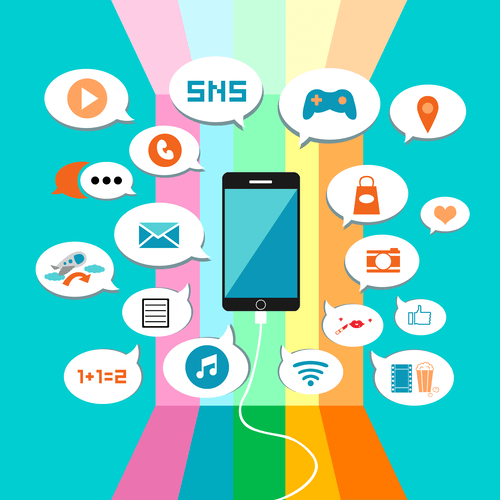How Can Virtual Reality Be Used To Improve Education?
Content
- How Virtual Reality Is Used in Education and Schools
- strategic considerations for School Leaders
- Virtual Reality in Education: Benefits, Uses and Examples
- Benefits Of VR For Educators In Online Teaching
- Data availability statement
- Be realistic and think about how you can use your own VR resources to teach
- Introducing AR and VR as Educational Tools to Teachers in Poland
Moreover, students agreed with “The next semester, I will definitely look for some VR support” which is another way of access for future use that could have come in handy in other courses. Results of Likert-scale dimension of the use of virtual reality as a learning tool. We had one control group and one experimental group, and we measured their performance in a pre-post questionnaire. Dodevska and Mihic highlight some advantages and disadvantages of using VR. As advantages, VR can help make decisions in complex projects, reduce time and efficiency, and provide simulations that could lower costs and improve experiences.
When the physical and the digital worlds intersect, children can gain vivid context that supports instruction. Augmented reality, in particular, allows educators to turn 2D devices into 3D devices. Students can see what is physically around them and educators can supplement that with more relevant digital content. Though this was originally developed for entertainment, mixed reality in education is also valuable.
How Virtual Reality Is Used in Education and Schools
During the study, administrators recorded learning levels and emotional responses. Students who learned with help from VR had higher positive emotional responses to the content. They’d routinely state that they found the VR learning to be more engaging than ‘basic’ and ‘boring’ learning approaches. We’d also be willing to bet that these students were more enthusiastic about going to school since they had more opportunities to try something new.
- A key benefit of using VR in education is that you learn through experience.
- VR experiences have the power to engage and spur students’ creativity.
- Augmented reality can inspire kids to be creative and learn new skills.
- Virtual reality in education may sound like science fiction, but these two industries go hand in hand better than you’d think.
- One of the most prominent benefits of virtual reality in education is that it can make learning more engaging, accessible, and interactive.
Most research compares students’ learning outcomes when using VR to other approaches such as AR, hands-on experiences, and/or traditional education. Research suggests that VR is more effective for visual educational content, while AR is a better option for auditory learning (Huang et al., 2019). VR application in the online classroom is possible now that digital tools are becoming more accessible to all users.
strategic considerations for School Leaders
With all this, VR-based online teaching offers a remarkable opportunity for students who want to learn new skills or those who prefer self-learning experiences. VR in education offers an immersive learning experience that allows students to interact with their environment in a way that was previously impossible. The technology can be used to create simulations of real-world scenarios, allowing students to practice skills in a safe and controlled environment.
If you get interested in our expertise, read more about Keenethics’ Education software development services. Both React 360 and A-frame are ideal for dynamic web virtual reality. Each technology has its own set of features aimed at particular goals. React 360 allows you to design an interactive VR environment accessible on any browser. What should learners do if they don’t have the necessary hardware to get VR experience? The main goal of the technology is to become accessible to a broader audience through a web browser.
Virtual Reality in Education: Benefits, Uses and Examples
Post the pandemic, studies show how students’ engagement has dramatically diminished due to a more extended period without entering physical classrooms, among other reasons. Student engagement generally refers to the degree of curiosity, interest, motivation, and attitude a learner displays during the learning sessions. Depending on the course or the goal, learners can enter virtual environments and experience things as though in the real world or present in that particular time in history.

Within this continuum, we find augmented reality, which integrates virtual objects into real-life environments, usually using devices such as smartphones or wearable smart glasses . The real-life environment and the virtual objects interact through the augmented reality device in real-time . For example, when taking a real-life picture with a camera on a smartphone, AR can attach virtual objects to the photograph . It has been found that augmented reality helps students to visualize abstract concepts, allowing them to observe phenomena that would be impossible otherwise .
Benefits Of VR For Educators In Online Teaching
Walter and I were able to discuss what we were looking at in real time, each of us represented as VR avatars. After all, there are many things we can teach through books and lectures, but we can’t teach students https://globalcloudteam.com/ to internalize the vastness of a billion stars, or the profound smallness of a billion atoms. The possibilities have always seemed endless, but the technology was never quite ready for mass deployment.
According to Wired, it began with the Oculus Rift—a headset released in 2012 connected to a monitor that immersed the user in a 3D realm. Since its introduction, VR has shifted not only how we experience video games but also how we experience the entire digital space, including the use virtual reality in education of virtual reality in education. These were some of the questions we tried to answer with a survey conducted in November 2002 by Futuclass. Another study used 61 male students and 43 female students from two secondary schools in the Dutsin-Ma Educational Zone in Katsina State, Nigeria.
Data availability statement
Being immersed in what they are learning motivates students to understand it fully. Most school boards cannot afford it and so, they can only dream about using it no matter how great the benefits are. Moreover, some students with a richer budget can afford it, but other children cannot use it. This creates a huge gap between them and may lead to envy and enmity. AR technology can be used both in the classroom and for distance learning, as well as in any educational environment, including galleries and museums. Every category of learners, from elementary school students to long-time professionals, can benefit from AR learning.




